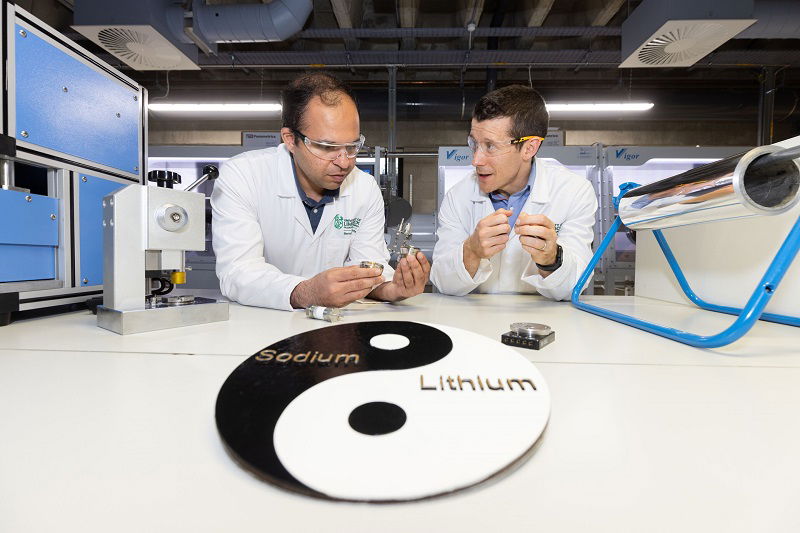Scientists at the University of Limerick (UL) in Ireland have developed a groundbreaking new battery technology that could revolutionize electric vehicles, portable devices, and renewable energy storage.
The research team has built the world’s first full-cell dual-cation battery, which utilizes both lithium and sodium ions to enhance performance and stability. This innovation marks a significant leap forward in sustainable energy technology.
Published in the journal *Nano Energy*, the project was led by Associate Professor Hugh Geaney and Dr. Syed Abdul Ahad, a Government of Ireland postdoctoral fellow at UL’s Bernal Institute. Their collaborative work with the University of Birmingham aims to create batteries that are more powerful, affordable, and environmentally friendly.
### Combining the Best of Lithium and Sodium
Currently, most batteries rely on lithium ions, which provide high energy but raise environmental and supply chain concerns. On the other hand, sodium-ion batteries use more abundant and lower-cost materials but typically offer less energy storage.
The new UL battery design combines the strengths of both lithium and sodium ions in a single system.
“For the first time, we’ve shown that sodium-ion batteries can be ‘supercharged’ by pairing sodium and lithium in a sodium-dominant dual-cation electrolyte,” said Geaney. “This breakthrough opens the door to more sustainable, high-performance battery chemistries.”
### How the Dual-Cation Battery Works
Dr. Ahad, who designed and led the experimental work, explained the science behind the innovation:
“By introducing both lithium and sodium cations, we effectively double the battery’s capacity compared to a typical sodium-ion battery. Lithium acts as a capacity booster while sodium remains the main working element. This approach has never been demonstrated before using the materials we tested.”
The design allows lithium ions to enhance the energy density of the sodium-based system, delivering the power of a lithium battery without heavily depending on lithium itself.
### Benefits and Future Potential
The result is a safer, more stable, and eco-friendly battery capable of running up to 1,000 charge-discharge cycles — a critical milestone for electric vehicles and grid-scale energy storage.
In addition to improved performance, the dual-cation system reduces reliance on rare and expensive metals like cobalt, which are often associated with environmentally damaging mining practices.
“Our work provides a realistic path toward greener and more sustainable batteries,” added Geaney.
### Exploring New Horizons
The researchers are currently investigating additional material combinations and alternative ion pairings, including lithium-magnesium and potassium-lithium, to further advance this technology. They are also testing silicon-based anodes, which could offer even greater capacity.
If successful, this Irish-led innovation could usher in a new generation of sustainable batteries — ones that charge faster, last longer, and help power a cleaner, greener world.
https://knowridge.com/2025/10/worlds-first-dual-cation-battery-could-power-a-greener-future/


